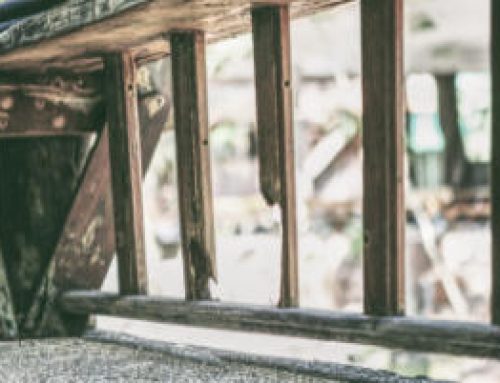In the rush to complete a construction job, contractors may close up the walls without  knowing that the framing wood is too wet. While it is too late to determine wetness after drywall is hung, you will see the aftereffects appear before long. That’s why it’s important to professionally test the moisture content in your framing materials at the framing stage.
knowing that the framing wood is too wet. While it is too late to determine wetness after drywall is hung, you will see the aftereffects appear before long. That’s why it’s important to professionally test the moisture content in your framing materials at the framing stage.
Moisture in Wood
Wood was once a living tree, and as such, needed water to survive. After the tree is cut down, moisture still exists within the wood. When the wood is processed, the tree is cut and trimmed into pieces and those pieces are moved into an area to be dried, or seasoned. This helps the wood to not only dry, but shrink.
Lumber can be air-dried or kiln-dried. Air-dried wood contains about 20% moisture, while lumber that is kiln-dried contains less than 15% moisture. The kiln-dried wood is most often used for interior construction, as for flooring, moldings and doorways where minimal shrinkage is optimal.
One of the properties of wood is hygroscopy, or its ability to attract and retain water molecules from the environment. As it accumulates moisture, the wood swells, and can actually push the structure of a home. When it dries, the wood shrinks—again affecting the structure.
Moisture in Construction Framing Members
If you are building or renovating a home, it is worth your while to measure the water levels in your wood framing prior to the framing being concealed by drywall or siding materials. Normal moisture levels in 2x framing should fall between 10% and 15%.
However, if the framed structure becomes soaked during construction, as by heavy rains, and before the house is “dried in,” the wood absorbs this extra moisture and does not have the opportunity to properly dry. Even high humidity levels that consistently fall above 90% humidity will affect the moisture levels in the wood frame members. This can cause construction failures.
Construction Failures Can Occur
If the framed wood is concealed before it has a chance to dry out, and moisture levels are at 18-20%, there is a high probability that latent microbial growth will develop under the drywall. This can lead to unhealthy mold and mildew problems. Faster corrosion that can lead to structural failure is also a possibility.
According to an article in the Journal of Light Construction, most home-building lumber is kiln-dried and should arrive at a moisture content less than 15%. Non-pressure-treated lumber falls between a 15% and 19% moisture content, and at that 19% is where mold spores are activated and wood begins to rot.
Normally, after a few months of heating and cooling, the moisture in the framing lumber dries and the house settles. This is perfectly normal. If the lumber is wet, and isn’t given the chance to dry out before concealment, the following problems can occur:
- Drywall cracks (you’ll particularly see these above windows and doors)
- Squeaks in floors and stairs
- Nail pops
- Plumbing being “pushed” out of alignment by expansion or contraction, leading to water leaks
How to Check Framing Wood for Moisture
As part of a forensic investigation, we use a moisture meter, or thermometer, to check a home’s framing components before drywall is added. You want to verify that the moisture within the wood falls below or within the recommended guidelines. If it does not, you should hold off on installing drywall until the moisture levels are acceptable.
Trust Först Consulting Group for Moisture Inspections
Först Consulting Group can provide Moisture Testing for residential or commercial inspection. This is a non-invasive technology that enables our trained technician to detect and report on issues that cannot be observed through our normal senses.
To learn more about moisture testing, or to schedule a forensic investigation, contact Matthew Furlong at Först Consulting Group.


